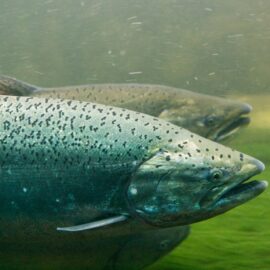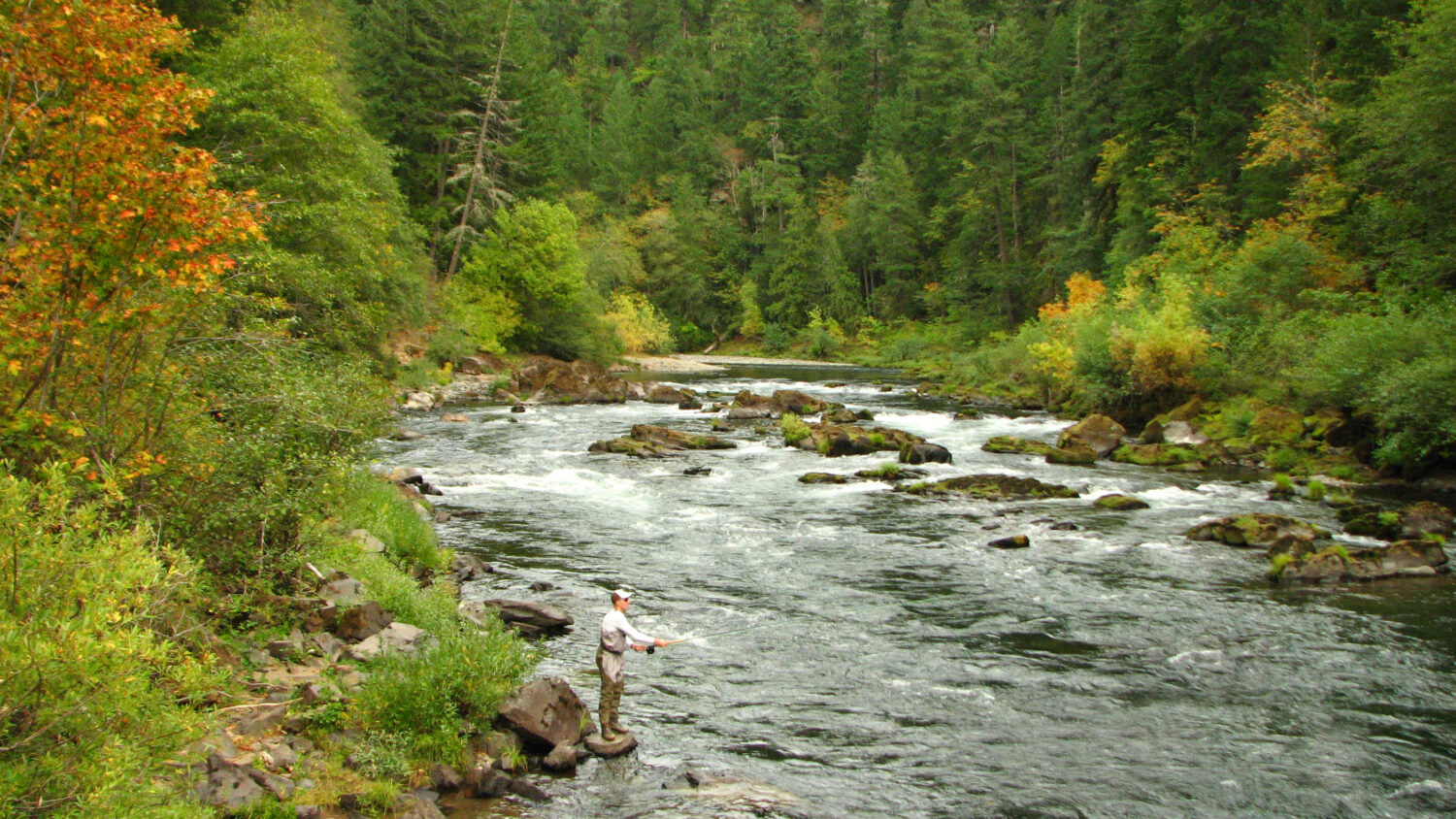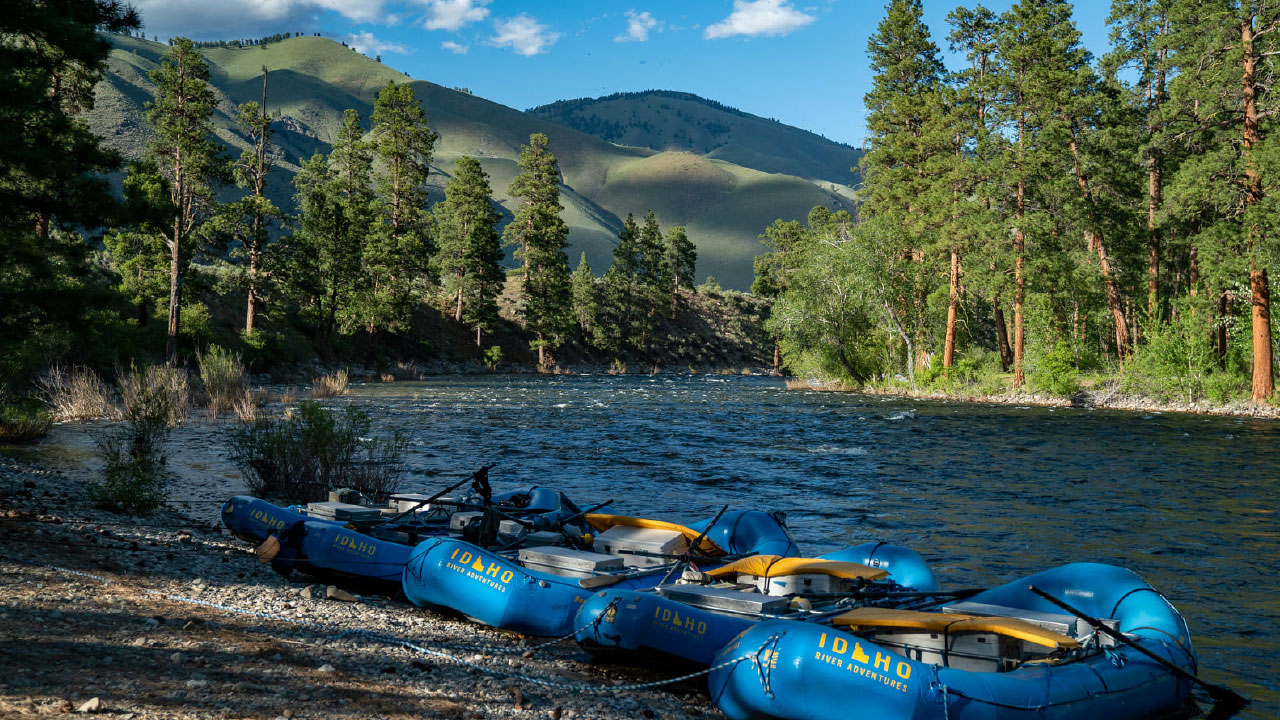The future of wild salmon and steelhead in the Columbia Basin depends on removing the Lower Snake River dams. A new WSC assessment says the time to remove them is now.
In the midst of a crippling drought across the Northwest—one of the worst on record—Wild Salmon Center is joining Tribes, fishing and conservation organizations, and members of Congress in calling for the removal of the four Lower Snake River dams.
“If these dams are removed, the Snake River Basin could become the largest cold water salmon stronghold in the Lower 48 States,” says Wild Salmon Center President Guido Rahr. “The worsening effects of climate change mean that we have to adjust to a new normal. It requires us to take decisive steps if we want wild salmon and steelhead in the Northwest for our kids and grandkids.”
“Removing the dams is one of the critical steps in recovering Northwest wild salmon,” says Wild Salmon Center Executive Vice President Sara LaBorde. “And it also offers an important lever for investing in Northwest infrastructure and economies in a way that will boost prosperity—particularly in rural regions—for the next century.”
Federal, state, and independent scientists have been calling for the removal of the dams for two decades. And Wild Salmon Center’s new assessment on the Lower Snake Region, released today, outlines four key thresholds that the region has crossed, which collectively point to an imminent need for dam removal:

- Wild Snake River salmon and steelhead are now on a path to extinction, as both juveniles and adult salmon and steelhead consistently fail to make it through the dams’ hydropower system in sufficient numbers. (A new analysis from the Nez Perce Tribe found that wild spring Chinook and summer steelhead populations declined an average of 18-20 percent every year for that last decade in the Snake River system.)
- A new generation of cheap, reliable non-hydro renewable energy now gives energy providers viable options for replacing the dams.
- Evolving agricultural operations that depend on the dams are consolidating in ownership and diversifying transportation routes.
- The Biden Administration has said it will honor historic commitments to Tribes. Conserving Snake River salmon and steelhead—and preventing them from going extinct—is a step toward honoring treaty obligations to Pacific Northwest Tribes.
Unlocking a Salmon Stronghold
Freeing up the Snake River could be accomplished in several different ways, including removal of the earthen berms next to the four Lower Snake River dams to leave the existing dam walls intact.
Regardless of the method, allowing the river to run free in that section would drastically improve salmon and steelhead habitat in the basin in several ways.
First, removal would open up 140 miles of new fall Chinook spawning and rearing grounds in the area currently inundated by the dams. Currently, this multi-dam gauntlet forces young fish to swim through powerhouses and creates miles and miles of lethally hot, slow-moving reservoirs where food is nonexistent and predators are abundant.
Second, removing the dams would allow wild fish to better take advantage of 30,000 miles of tributaries that reach into Idaho and Northeast Oregon. This highly productive network of cold water streams is projected to remain cold enough for salmon and steelhead through the end of the century, and could comprise a large percentage of suitable habitat in the Lower 48 in 2080.
Third, the existing stock of wild spring Chinook and summer steelhead in the Snake basin are genetically-diverse mountain swimmers that travel above 6,000 feet to spawn and head for cold mountain streams early in the year to wait out dry, hot summer conditions—a key climate adaptation very likely to improve their chance of survival through this century. Opening up the river would unlock the natural potential of these climate-adapted fish.
“This is the cold water stronghold that the Northwest needs to revive flagging Columbia River system salmon and steelhead,” says Wild Salmon Center Washington Program Director Jess Helsley. “We have an opportunity to reverse the trends of decline we’ve seen in the last quarter century, even with the effects of climate change.”
This is the cold water stronghold that the Northwest needs to revive flagging Columbia River system salmon and steelhead.

What’s Next?
Wild Salmon Center is now asking Northwest Congressional leaders to:
- Establish a significant fund to develop a comprehensive plan to breach the dams, restore the Lower Snake River, and mitigate the impacts of dam removal (e.g., establishing replacement energy and creating a sustainable future for local communities).
- Implement near-term actions in transportation, shipping, irrigation, and energy that will enable comprehensive long-term actions.
“We need to take these steps now to get dam removal and economic investments moving simultaneously,” says LaBorde. “There is a huge opportunity to rebuild abundant salmon runs, provide reliable, clean power, and ensure vibrant Snake River communities. But this opportunity will not be available for long. To seize the moment, we need to shift the conversation from ‘IF we remove the dams’ to ‘HOW we remove the dams.’”
For more information WSC’s work on the Lower Snake River, contact Jess Helsley at jhelsley@wildsalmoncenter.org.
